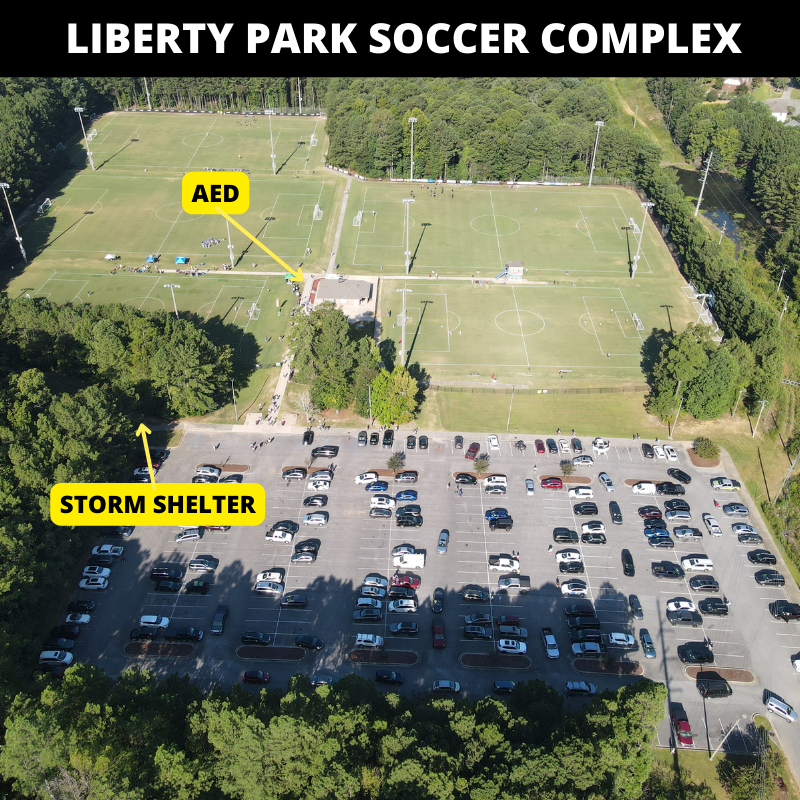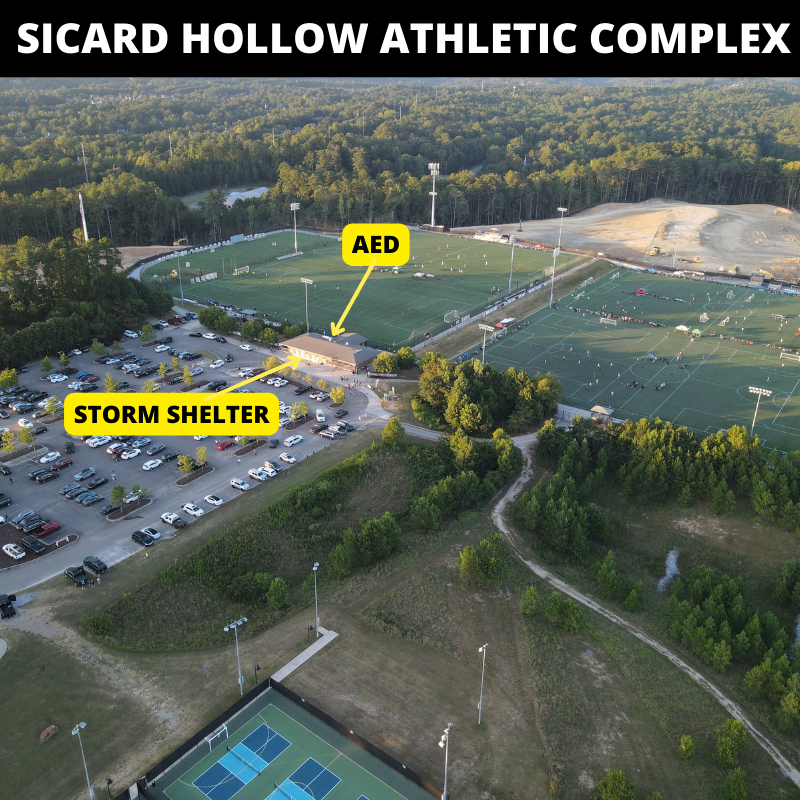VHSC EMERGENCY ACTION PLAN (EAP)


1. Emergency Contacts
- In Case of an Emergency, Call 911 immediately
- Primary Contacts:
- Rocky Harmon: 205-305-8556
- Luke Whittle: 205-368-3873
- VHSC Administration Email: [email protected]
- Download our EAP (PDF): Click here
2. Facility Locations & Addresses
- Liberty Park Soccer Complex
-
-
- Address: 4700 Sicard Hollow Rd, Vestavia Hills, AL 35242
- AED Location: Inside the Trainer’s Room at the concession stand
- Emergency Access Point: Back of the complex, past the Elementary School and Softball fields
- Emergency Phone: Next to the Trainer’s Room at the concession stand
-
- Sicard Hollow Athletic Complex (SHAC)
-
-
- Address: 4851 Sicard Hollow Rd, Vestavia Hills, AL 35242
- AED Location: Inside the SHAC Meeting Room at the concession stand
- Emergency Access Point: East side of the parking lot, near the concession stand area
- Emergency Phone: Inside the SHAC Meeting Room
-
- Central Field
-
-
- Address: 1289 Montgomery Hwy, Vestavia Hills, AL 35216
- Emergency Access Point: Front entrance of the field area, accessible from the parking lot
- Emergency Phone: At the main field entry point
-
- Dolly Ridge Elementary School
-
-
- Address: 2860 Oakview Ln, Vestavia Hills, AL 35243
- AED Location: Inside the school’s main hallway near the front office
- Emergency Access Point: Main entrance to the school grounds
- Emergency Phone: School front office
-
- Vestavia Hills Elementary East
-
- Address: 2109 Tyson Dr, Vestavia Hills, AL 35216
- AED Location: Inside the school’s gym near the main entrance
- Emergency Access Point: The school’s main parking area
- Emergency Phone: School front office
3. Emergency Protocols
- Step 1: Assess the Situation
-
-
- Evaluate the injury or incident’s severity.
- Send someone to retrieve the nearest AED and call 911 if necessary.
-
- Step 2: Alert Emergency Services
-
-
- Call 911 and provide precise location details: Facility name and specific field or area.
- Relevant emergency access points or landmarks.
-
- Step 3: Provide First Aid
-
-
- Perform basic first aid or CPR if trained.
- Use AED following its instructions, if available.
-
- Step 4: Guide Emergency Responders
-
- Designate someone to meet responders at the facility entrance and lead them to the injured individual.
4. Incident Reporting
- Complete an incident report detailing the situation, response actions, and response time.
- Submit the report to VHSC administration for record-keeping and follow-up.
5. Safety Equipment Locations
- Ensure staff and coaches know each facility's AED locations and emergency access points.
- Keep first aid kits and emergency contact lists available.
6. Communication with Parents and Guardians
- Contact a parent or guardian of an injured player immediately.
- Provide updates on the incident and the player’s condition.
7. Weather-Related Illnesses
- Heat-Related Illness: Recognize symptoms like fatigue, dizziness, or confusion. Move the individual to a shaded area, apply cooling methods, and hydrate. In severe cases, call 911 and use ice water immersion if available.
- Cold-Related Illness: Symptoms may include shivering, numbness, or impaired mental function. Gradually warm the person, avoid direct heating on limbs, and call 911 if symptoms continue.
8. Cardiac Arrest Emergency Action Plan (EAP)
- Step 1: Prepare - Ensure a quick response plan is in place for all practices and games.
- Step 2: Identify and Respond - Assign someone to call 911 and someone else to retrieve the AED.
- Step 3: Start CPR - Begin hands-only CPR with compressions at 100 per minute.
- Step 4: Use the AED - Place pads on the individual’s chest as instructed by the device.
- Step 5: Continue Care—If no AED is available, continue CPR until help arrives. Switch out as needed.
- Step 6: Follow AED Protocol - Ensure clear instructions for AED use are followed, and listen to voice prompts.
9. Concussion Management Emergency Action Plan (EAP)
Recognize Concussion Symptoms: Signs include a dazed appearance, confusion, clumsiness, and memory loss.
- Step 1: Remove the Player - If symptoms are present, remove the player immediately and prevent return to play until evaluated.
- Step 2: Evaluate - Ensure a healthcare professional assesses the player immediately.
- Step 3: Rest and Recovery - Do not allow a player to return without medical clearance, as premature return increases the risk of complications.
All coaches and staff should know these procedures and their roles during emergencies.
